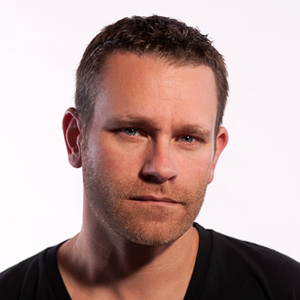Having the right talent acquisition process can give tech companies the upper hand to attract the most highly skilled and best culture-fit talent on the market. Creating an employer brand that aligns with your talent strategy can help attract top talent, and in exchange, lead to better performance and outcomes.
But have you ever had a hard time trying to find the right person for a key position in your company? You’re not alone. A recent study done by Korn Ferry found that almost 60% of employers are struggling to fill open positions within 12 weeks. Giving companies a limited amount of time to find the right candidates who have the right skills and experience to build a thriving and successful team. So how can you attract and retain the best talent for your company?

In this episode of the Igniting Startups podcast we asked 6 different CEOs, executives, and leaders around the Powderkeg community how they attract the most extraordinary talent. The result is a narrative that shows how leaders build thriving and successful teams: the legwork that’s needed, the right timing, and what to look for when you’re interviewing people for a new role. Tune in for more!
In this Powderkeg episode, you’ll learn:
- How to find the right fit for your team and your company
- Ways to discover your personal core values
- How to cultivate talent to build a successful team
- What great talent is and how to find it, no matter where you are
Please enjoy this conversation!
- Listen to it on iTunes.
- Stream by clicking here.
- Download as an MP3 by right-clicking here and choosing “save as.”
If you like this episode, please subscribe and leave us a review on iTunes. You can also follow us on Soundcloud or Stitcher. We have an incredible lineup of interviews we’ll be releasing every Tuesday here on the Powderkeg Podcast.
Quotes from this episode of Igniting Startups:
Links and resources mentioned in this episode:
Companies and organizations:
People:
- Dawn Lively(@Dawners4)
- Karen Seketa (@Karenseketa)
- Jacqueline Cooley (@OfftheRecordHR)
- Mike Seidle(@indymike)
- Chad Fife (@chadfife)
- Haley Altman(@Haley_Altman)
Did you enjoy this conversation? Thank our guest on Twitter!
If you enjoyed this session and have few seconds to spare, let them know via Twitter by clicking on the links below:
Click here to say hi and thank Dawn Lively on Twitter!
Click here to say hi and thank Karen Seketa on Twitter!
Click here to say hi and thank Jacqueline Cooley on Twitter!
Click here to say hi and thank Mike Seidle on Twitter!
Click here to say hi and thank Chad Fife on Twitter!
Click here to say hi and thank Haley Altman on Twitter!
COMMENTS?
What stood out most to you in this episode of Powderkeg podcast?
For me, it’s how to find the right fit for your team and your company.
You? Leave a comment below.
WANT MORE?
To subscribe to the podcast, please use the links below:
Click Here to Subscribe via iTunes.
Click Here to Subscribe via RSS (non-iTunes feed).
To download the PDF file for the full transcript of this podcast, please use the link below:
Click Here to Download PDF file
If you have a chance, please leave me an honest rating and review on iTunes by clicking here. It will help the show and its ranking in iTunes incredibly! Thank you so much!

Episode Transcript
Hey there powderkeg fans. I’m your host, Matt Hunckler. And this is powderkeg igniting startups, the show for entrepreneurs, leaders and innovators building remarkable tech companies and careers in areas outside of Silicon Valley. Today is all about talent, how to attract it, how to retain it, and then how to cultivate it to build your team. Let’s get started. If you’ve ever had a hard time finding the right hire for an important position in your team, you’re not alone. Just look at the stats. 73% of employers are having a difficult time finding skilled candidates. That means talent acquisition is on everyone’s mind. And you might wonder how to do a little bit better. I know I do sometimes. Let’s hear what these six experts have to say about talent acquisition in tech. Of course, human resources and talent acquisition are two very different things. Don lively is the CEO at full stack PEO a company that helps small businesses outsource their HR function. That means she understands the skills needed for effective recruiting. And that they’re different than the skills required for effective HR.
01:09
A lot of times recruiting is let’s find a warm body to fill an empty roll that we have at this given point in time. If you’re looking for talent acquisition, you’re trying to find the right people the right fit the right roles to grow your company. And one of my biggest pet peeves is when talent acquisition gets lumped into human resources. Because what we’re talking about here as far as actual talent acquisition, and really being deliberate about it, and diligent about it, and all of that, that is a full time profession for someone. And it sometimes takes a very different skill set than a human resource professional, who may be handling benefits, claims issues. Maybe a strategic HR person is trying to help with organizational development. Every position in our lines is interwoven together very well. But when you take an HR professional and you say, oh, here, go do recruiting, I think that’s doing both your talent acquisition a disservice and your HR professional at a service,
02:08
someone in charge of hiring needs to be keeping an eye on new resumes, portfolios, getting to know people quickly. And those capabilities may not be part of a general HR employees strongest skill set. That’s why distinguishing the two at your business could be a key to better talent acquisition. And of course, talent acquisition is more than just recruiting you have to have a system. Karen cicada is the vice president of talent element three, an agency that prides itself on the ability to make brands stand out in order to drive company growth. Here’s Karen sharing how the entire process of talent recruiting needs to be considered.
02:44
In my mind, I picture sort of like the sales funnel that you would use in sales and marketing. And it’s it’s the entire process from, you know, the awareness of your company to the talent that’s out there that you’re trying to recruit. And then all the steps that go in between all the way down to the point where you hire and onboard that person.
03:04
The average interview process in the United States takes 24 days. And stats show that 70% of applicants lose interest in a job after a single week. A good talent acquisition process is going to have many steps. So it needs to be efficient. A lot of times talent acquisition can feel reactive, like you need that right person right now. I sat down with full stack CEO Don lively to talk about this very thing.
03:29
talent acquisition strategy is about having your roles defined your roadmap of based on our growth, say your startup in your growing and emerging company? What roles are you looking to fill this year, next year, the year beyond? What are the hard skills and the soft skills that you need for those people? But also then where do you see those roles and those people evolving as time goes on? And it’s about having a bigger map than to just oh, okay, right now today I need a person to focus on my web content strategy.
04:02
Looking ahead to what the future of a vacant position looks like. We’ll help you place talent today that can grow with your company tomorrow. How many times have you done something outside your job description, consider what additional strengths your new hire will need in the future and try to find them. Now. When you post a job to look for that next new hire. Of course, applicants are always going to research to learn about your brand and about your company. 84% of job applicants said the reputation of a company is important in their decision to join the company. Here’s what Jacqueline Cooley who leads HR and talent acquisition at driver reach had to say about promoting your brand to a potential employee.
04:39
So first, you have to figure out what you’re hiring for and figure out where those people hang out. Now it’s where they hang out online. So I’ve hired for a lot of different roles. For example, say your hiring and sales. Where do those people hang out and what kind of message are you trying to portray to them? First of all, what exactly are you trying to hire for? So first do you figure that out, then you figure out where they hang out online, and then you go find them. And that sounds really simplistic, but as long as everything that you’re saying matches up with the brand that you’re portraying, for your company online, then you’re gonna have some success,
05:14
it might seem obvious to make sure that recruits can find information about your company. But a lot of times, it just doesn’t happen. And if they can’t find that information, data shows that 37% of candidates will just ignore the job posting completely. If you’re trying to hire new talent at the moment, you may find out that your favorite candidates get snapped up for other roles before you can hire them. The market is hot right now. And Mike Seidel is the CEO and co founder of the recruiting platform work here. And he’s shared a little bit of his market insight about why hiring is such a challenge at this specific time.
05:49
So in our world, there’s kind of two sides to it, we get to see a lot of our customers and how they recruit. We also have our own internal recruiting and how we do it. And what we’ve learned from working with companies that we have with work here is, speed is underrated. One of the biggest mistakes that companies make is they go slow when they recruit. And if you’re dealing with a market, you know, if you look at unemployment, let’s say it’s 2.8%. That means there’s not a lot of available people out there. And the best people, it doesn’t take long in an interview process to realize I’ve got a good one here. And what happens with the best people is they go interview two, three times and start getting offers. And so if you go slow, and you’re not making an offer quickly, your chances of getting the best talent go down dramatically.
06:36
Technology is drastically improving the talent acquisition process. And some of the key processes like job posting, or resume collection and screening are completely automated, that saves hiring committees time so they can focus on finding the right fit among all of their options. Part of what makes talent acquisition a challenge for so many companies is all of the necessary steps. Either you include too many steps, or you may leave some critical ones out. And it may seem silly, but a lot of times these are essential chief client and Marketing Officer of work here, Chad Fife describe the common talent acquisition steps that their clients take, including which ones not to miss.
07:17
The steps number one would be defining the knowledge skills and requirements of a job. What it what does a job require? Now a lot of companies don’t do that. They just say any salesperson, well is it a SDR is it a manager, different skill sets. So I would say it starts with understanding the job. That’s what the recruiter needs to do. The next step is we’re going to find people. So to source candidates for that finely tuned, job role, job description, that, by the way, can take three months to do well. And companies pay $25,000 per high volume role to assessment companies as to where they came from, to make sure that they’ve diagnosed and captured the skills and requirements and knowledge needed to succeed in that role. So to find the role that a lot of companies do that source the talent, that’s very hard to do. And then screening interview, there’s a whole science to that there’s something called adverse impact, which is do the types of screening activities or tests or questions, do they adversely impact a certain population? Do they adversely impact females? Do they adversely impact minorities, there is a way to do screening and selection that is right for the company and for the industry. And then I would say, Let’s onboard them, and make sure you do a good job in the first there are stats out there that say, when you don’t meet with your manager and and have a real, genuine, authentic conversation on day one. There are stats that show that you will leave the company.
09:17
Clearly talent acquisition goes far beyond the job posting, interview, and even the offer 33% of new employees surveyed in 2018 quit their new job within 90 days, usually because the roll wasn’t what they expected or they didn’t like their boss, so don’t get caught up in the same trap. Talent Acquisition is a different game entirely when merging with or acquiring other tech companies. questions like how do the two cultures combined? What roles overlap and the goals of the new organization will all inform this strategy? Hayley Altman is the CEO and co founder, a legal document management tool docs Lee, and she shared what she learned after navigating a few of these mergers and acquisitions. When you’re thinking
09:59
about an acquisition, I think the biggest thing you have to think about is is like, what are your ultimate goals. So if your goal is to just kind of exit your business and kind of move on and go to the next place, then then it’s, it’s a different type of deal. But if you’re trying to kind of build your business and combined with another company to see how that now combined product is going to go forward, there’s so much more you have to think about. So you need to understand what the executive team at the new companies like how do they instill culture into their people like it’s so important, because if you don’t have values, you don’t have to have necessarily the exact same values. But if you can’t understand, like, kind of what their values are, and find some way to have alignment, it’s going to make for a really difficult transition, especially if your entire team is going on. So you want to understand when you position yourself for an acquisition, like what’s your expectations? Do you expect that the new company is going to hire everyone that’s going to be on your team? And do you understand are you going to have to move cities are you going to stay where you are, there’s so many things that can change the dynamic of like how things can happen once a deal is done, and
11:15
only 70 to 90% of mergers and acquisitions are actually successful. And one of the biggest drivers of failure is culture and turnover. As Haley discussed, tech town acquisition and retention during a merger has to be approached with a lot of strategy to keep the business strong. Before you land your dream candidate, you need to do a fair amount of legwork. Don lively is here again, to talk a little bit about why your company needs to prepare for an interview process in the same way a candidate would
11:47
need to do your background work, have your values in place, have your job profile established have do your background work before you just try to find a person to fill a seat so that they know what they’re coming into. It’s as much about finding a fit for them as it is a fit for your company.
12:03
So in summary, of course, talent acquisition is about much more than just sitting down for interviews. It’s a holistic process that needs every little piece in the right place from the first phone call to the job offer and beyond. Finding the right person takes time, but it can’t take too much time. You have to balance your needs now and in the future with what the talent market demands. That’s it for today’s show. Thank you so much for listening, and or watching and a big thank you to all of our experts on the show today. For links to their social profiles and the resources mentioned in this episode, check out the show notes on powderkeg.com. And to be among the first to hear the stories about entrepreneurs, investors and other tech leaders growing remarkable companies outside of Silicon Valley. Subscribe to us on iTunes at powderkeg.com/itunes Catch you next time on powderkeg igniting startups




